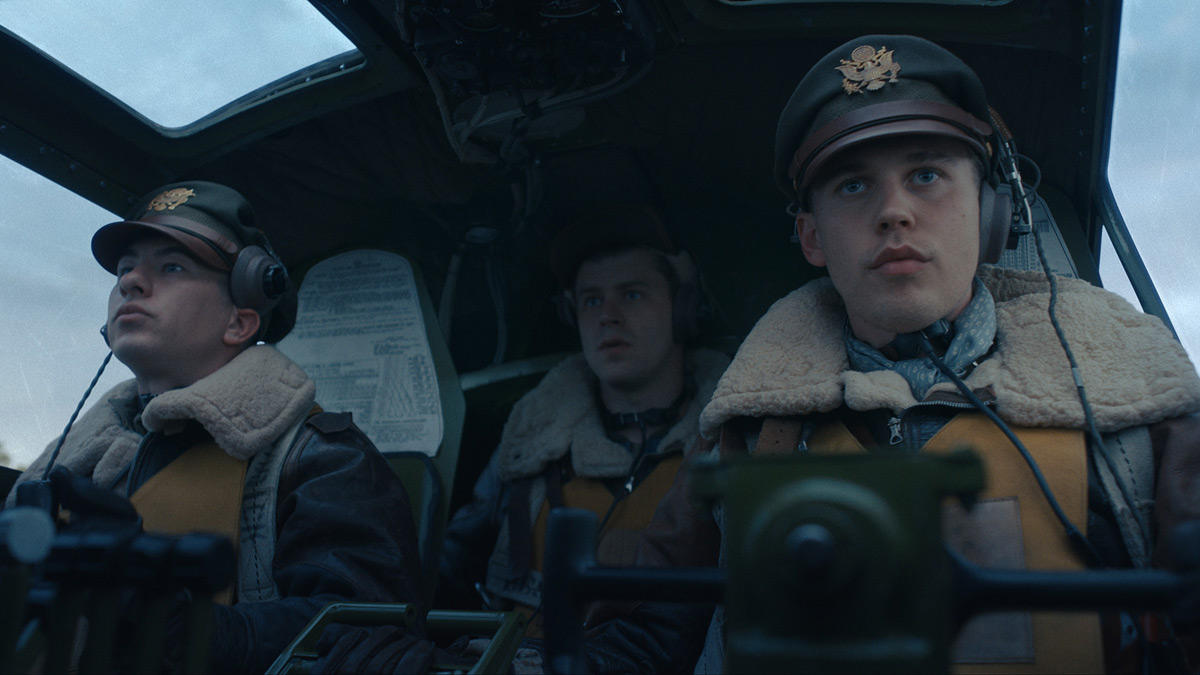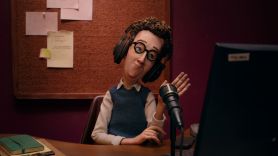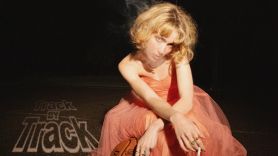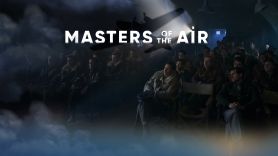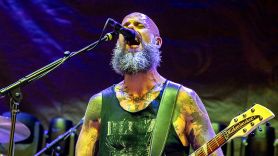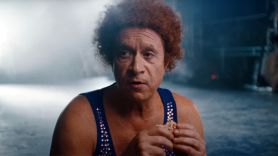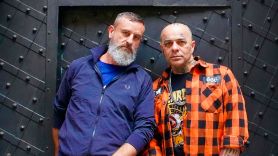While talking to the cast of Masters of the Air for our latest cover story, something that came up frequently was the experience of filming the series’ intense scenes of aerial acrobatics. These moments in the Apple TV+ series depict how the men who served in “The Bloody Hundredth” conducted bombing raids and transport missions essential to the fight — but, of course, the actors weren’t being sent up in actual aircraft.
In the past, similar productions to the World War II drama would have leaned heavily on greenscreen to create those sequences. However, thanks to Apple TV+’s budget, the producers were able to give the cast a much more immersive experience. “There was no green screen,” Masters of the Air star Anthony Boyle tells Consequence. “If the Nazis were coming at you firing bullets, you actually saw that. And when the fake bullets would hit you, the hydraulics would shake. It was like being in a roller coaster for six hours at a time.”
This was achieved with elaborate rigs which executive producer Gary Goetzman describes as “a 360 very sophisticated television screenage.” Essentially, a B-17 cockpit used for shooting these sequences was built inside a Volume, the term for the kind of immersive sound stages used for productions like The Mandalorian and House of the Dragon — and on the Volume screens, the actors would be able to see, in real-time, the action which might be occurring in the sky around them.
As Nate Mann describes it, “That wraparound screen was presenting content like where the enemy fighters are coming from, and genuine landscapes, the sun rotating as you’re moving. So talk about visceral — it was incredible, almost like a game. And they could, at any point, decide to put an enemy fighter over here and, you know, that would kind of like draw your attention. So we were really responding on the fly to what the visual effects engineers were able to put up, which made it invigorating. It was just super exciting to be able to sit up there.”
“P-51s flying around, flack going around — trying to be surprising to the guys when necessary, and then other times just giving them timings of what’s happening to them in their plane dramatically,” Goetzman says. “Two of the stages had gimbals where things were constantly rocking and rolling, in sync with what they were seeing on the screens there. It was amazing.”
Every effort was made to bring realism to those scenes. “The plane would shake to the side, and you’d have to react to that,” Barry Keoghan says. “For the reenactment of the flack coming towards us, they had little explosives in the cockpit. There was just so much, we were spoiled with so much. And I mean that in a nice way, in the sense that we didn’t have to do a whole lot other than react, and tell these mens’ stories — convey it through the eyes.”
Goetzman believes that the actors enjoyed that extra level of realism, because “normally you’re going, ‘Go!’, or shining a red light or green light to look that way. So it is a little better. They feel sky. They feel like they’re flying.”
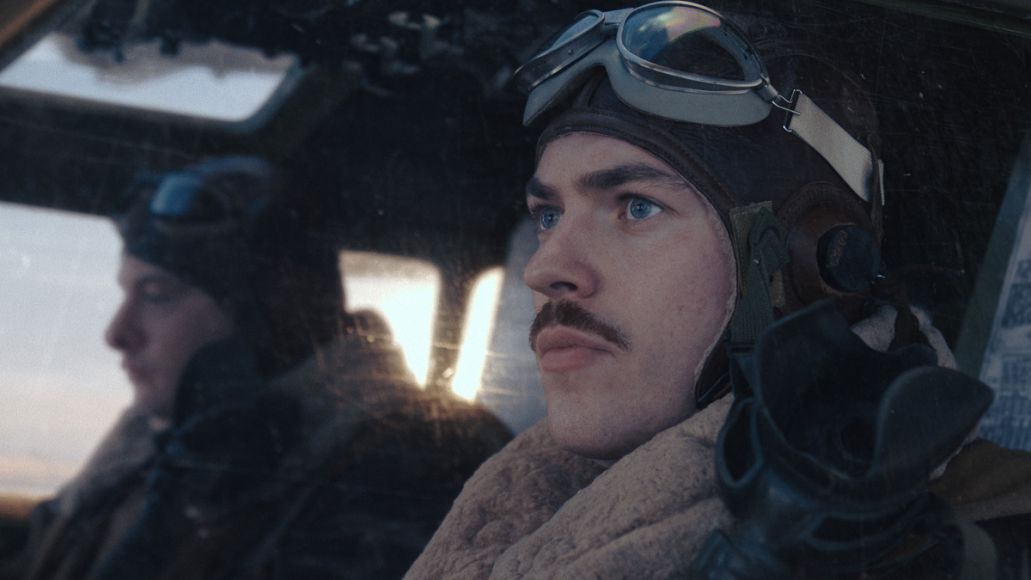
Masters of the Air (Apple TV+)
